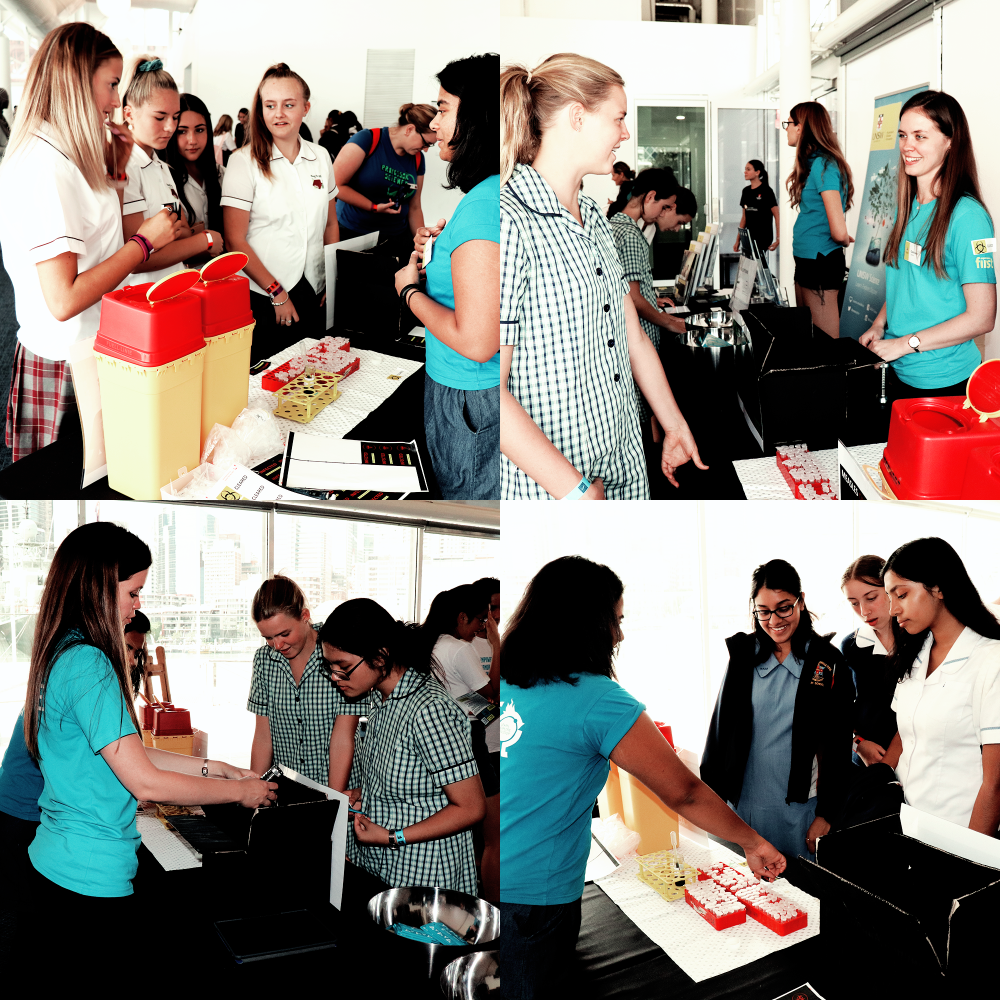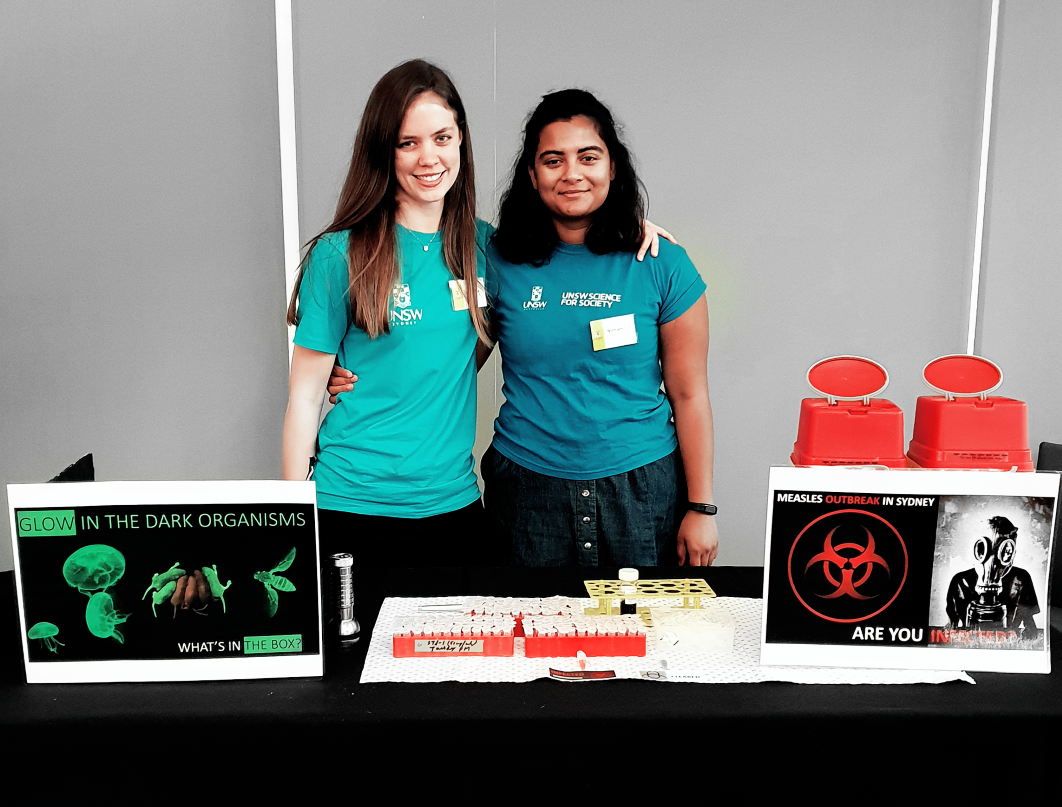By Dr Nirmani Wijenayake and Dr Gabriella Martyn

The surprised reaction of ‘Wow, you’re a doctor?!’ was a common response we received from high school girls at the Women in Science Symposium, held earlier last month at the Australian National Maritime Museum for International Women’s Day. While as early career researchers, we might be familiar with being surrounded by research and teaching academics, to these young school girls in years 9 to 12, it was surprising and exciting for them to meet other young females who already have a PhD and ‘Dr’ title. Inspiring and encouraging the high school girls to look beyond the lab coats and see the possibilities for a career in STEM was what this event was all about!
 We had two main activities planned for the event. The first one was designed to teach the students about the importance of vaccination and how infections could spread across the populations quickly. Each student was given a tube that is meant to represent a sample from their body. They add a chemical indicator into the tube to test if their body is ‘infected’ with measles by observing a colour change. They either received a ‘cleared’ or ‘quarantine’ sticker according to their test results, which they had to wear in plain sight, so that others knew if there was the possibility of contracting measles from them if they have not been vaccinated. The stickers we issued were a big hit! Some of the students who were not ‘infected’ wanted to be so they could also get a ‘quarantine’ sticker and join their friends. We picked measles as our infectious disease as it has been in the news lately due to resurgence of the disease in the United States due to the anti-vaccination movement. It was interesting to talk to the students about the anti-vaxxer movement because it was clear to us that only half of the students knew or heard of the movement and what it meant for public health. We think it is important to raise awareness about serious issues such as these due to the direct impact it may have on their lives.
We had two main activities planned for the event. The first one was designed to teach the students about the importance of vaccination and how infections could spread across the populations quickly. Each student was given a tube that is meant to represent a sample from their body. They add a chemical indicator into the tube to test if their body is ‘infected’ with measles by observing a colour change. They either received a ‘cleared’ or ‘quarantine’ sticker according to their test results, which they had to wear in plain sight, so that others knew if there was the possibility of contracting measles from them if they have not been vaccinated. The stickers we issued were a big hit! Some of the students who were not ‘infected’ wanted to be so they could also get a ‘quarantine’ sticker and join their friends. We picked measles as our infectious disease as it has been in the news lately due to resurgence of the disease in the United States due to the anti-vaccination movement. It was interesting to talk to the students about the anti-vaxxer movement because it was clear to us that only half of the students knew or heard of the movement and what it meant for public health. We think it is important to raise awareness about serious issues such as these due to the direct impact it may have on their lives.

The second activity we ran involved showing the school girls how we can make bacteria glow a fluorescent green! Since its discovery in a deep-sea jellyfish, the green fluorescent protein has been a vital research tool for laboratories all over the world, to visualise the expression and movement of proteins within a cellular system or organism. For this demonstration, we showed the girls what normal bacteria look like under a UV light and how they glow green when we insert the green fluorescent gene from the deep-sea jellyfish into the bacteria. The girls looked amazed when they saw the bacteria glow green! Some thought it was really cool, others thought it was freaky and one girl excitedly took a photo of the demonstration for her assignment on genetically modified organisms!
For us, one of the best parts of the day was talking to some of the students about our journey and how we got to where we are today. We managed to put their minds at ease about figuring out what they wanted to do, as a lot of them think they need to make those decisions right now. A lot of them were surprised that we were already Doctors because to them we looked too young to have achieved that. We also shared how our journey wasn’t a clear linear path and how that was okay because you will often figure out what interests and excites you in the field of science along the way.

We had an enjoyable day talking to these students and running the activities. In general, the students at that age didn’t seem to go out of their way to read about science news or discoveries unless they have a passion for the area already or have some influence through their family. Hopefully we managed to inspire some of these students to just be cognisant of what’s out there in the world of science – not necessarily as a career, but out of interest on how amazing it is. Even just starting a conversation about what they did at events like these with their parents at home could be a significant first step towards arousing their curiosity and sharing knowledge. It could not only benefit the students but those around them as well.
Follow Gabriella on Twitter

